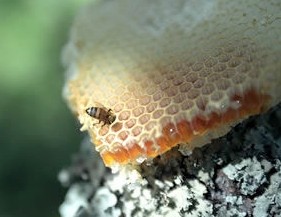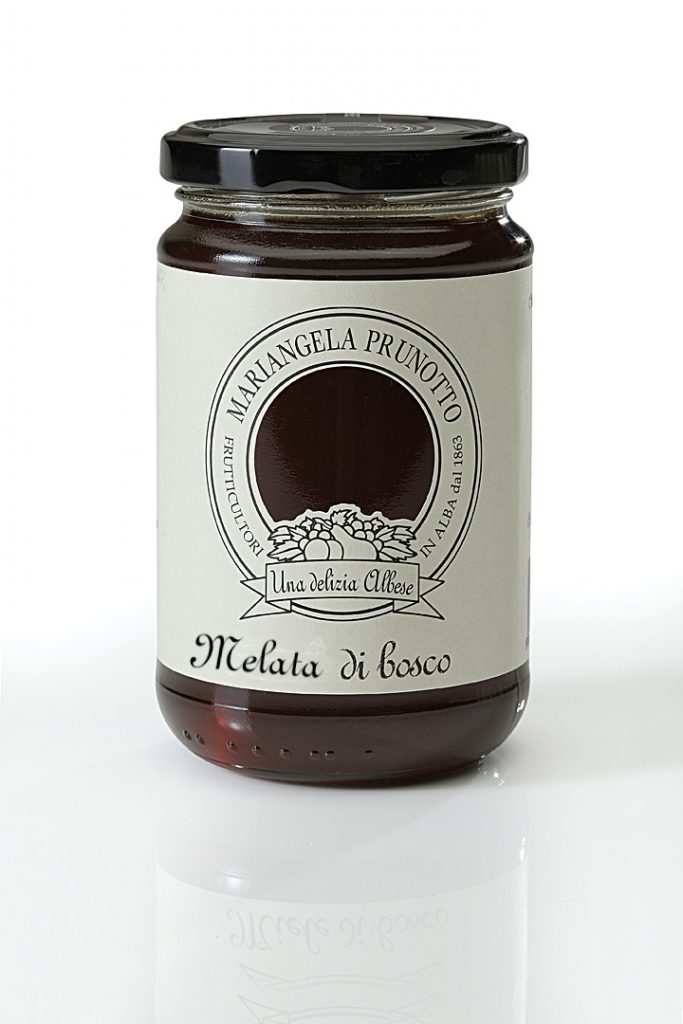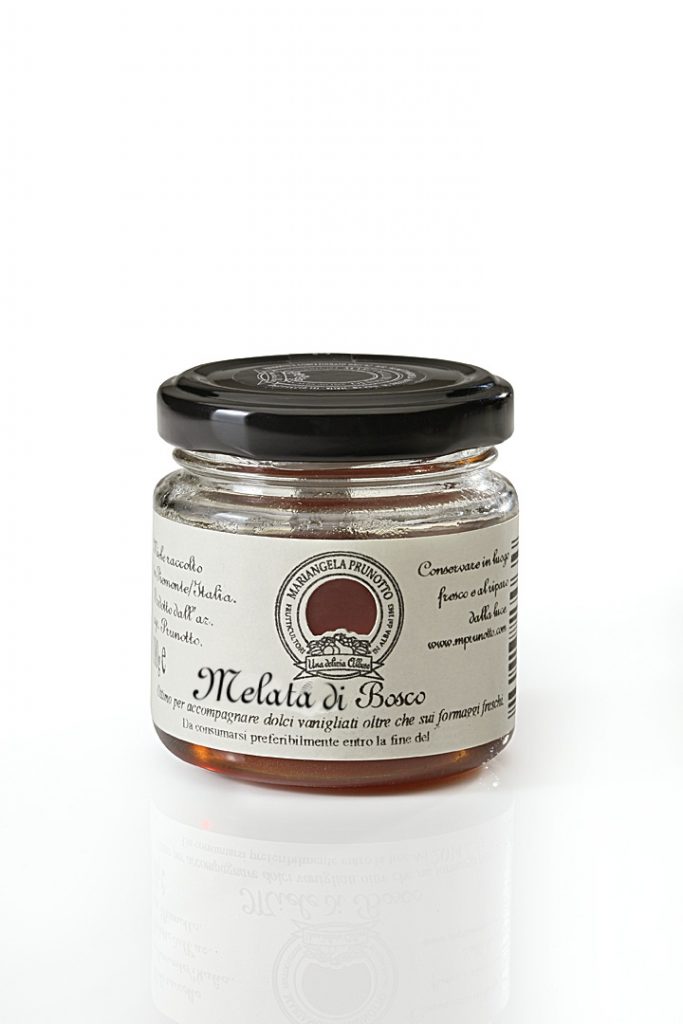 The trade name of “forest honey” or “Wild honey” identifies a product of teamwork between bees and other insects which, piercing the bark of trees, lime trees, chestnut trees … they spring up that precious sap “honeyed “and scatter the flowers and leaves surrounding.
The trade name of “forest honey” or “Wild honey” identifies a product of teamwork between bees and other insects which, piercing the bark of trees, lime trees, chestnut trees … they spring up that precious sap “honeyed “and scatter the flowers and leaves surrounding.
We produce this honey in bringing our bees in uncultivated forests of the Langhe and Roero, which in summer give a good production of this particular honey.
It has a dark amber color, sometimes almost pitch and is presented almost everywhere in the liquid state.
The aroma is intense with savour of vegetable, fruit, jam overcooked, green tomatoes, fig jam.
In the mouth the flavor is full, aromatic, slightly sweet than nectar honeys, almost salty for some, interesting for its aromatic complexity. The aroma, in fact, recalls the smell of tomato sauce and fig jam, but surprising malty flavor, with dates, of brick.
It ‘a honey so different from the honeys to surprise and intrigue even those who have not traditionally attracted to honey.
The complex aromas of this honey can pleasantly surprise when pair to medium-textured cheese, dry cheese, not too fat, or a toma Murazzano Roccaverano, but it looks good even in accompaniment with the noble Castelmagno cheese.
Even the forest honey as a sweetener can be combined with the warm milk that goes through the malty component (a flavor near to the sugar cane).
Elementary information
Name of the product: Wild blossom honey
Category: Honey
Net weight: 100 g or 400 g.
Ingredients: 100% Italian honey from Piemonte
… a little bit of history ..
To produce honey “Monoflorale” (one flower hoey) we adopt the practice of ‘”Nomad Beekeeping“.
First, it is good to know that the of bees does not fly more than 2 or 3 km radius around the hive.
The nomad beekeeping is a way to move the hives from place to place depending on the presence of plants in bloom. Moreover, these displacements enable the production of flower honeys allowing a better supply of the final product.
One time the hive were loaded onto special boats that went up the rivers towards the most favorable regions from honeydew. When you reached a certain waterline, the hives were full.
Today the movement of hives occur on the road: you load them in the night (when all the bees have returned) and unloaded at sunrise.
The movements are often functional changes in altitude, and the season progresses, beginning from the plains and valleys between April and early June, following the more blooms late July and August, ending with the harvest of honeydew, before return to winter in the plains.
This method, which turns out to have very high costs of management, is in ‘”chase” the various spring flowering and summer moving the combs with the families of bees. This allows us to choose the most healthy and unpolluted places with the greatest concentration of flowers.
… curiosity …
Man uses honey from about 12,000 years.
The most ancient depiction of honey collection it has been discovered in 1921 on the walls of the cave spider in spain, dates back to the Neolithic period around 5000 BC.
 A family of bees consists of one queen bee, many (from 6,000 to 70,000) workers (sterile females), from drones (males) and brood (larvae). A hive consists of a single colony or family.
A family of bees consists of one queen bee, many (from 6,000 to 70,000) workers (sterile females), from drones (males) and brood (larvae). A hive consists of a single colony or family.
The bees are on earth from 4 million years for the same current appearance.
Worker bees have an average life of 6 weeks in summer and are primarily responsible for supplying the hive with their favorite food, while those born in late summer or early autumn will live from 5 to 6 months will have a body more rich in fat acids. Their work is to protect the queen, to keep the swarm in glomere that will pass the winter at a temperature of about 30 ° C, and then, in February, prepare for the arrival of new generations.
In ancient Babylon, the just married couples received as a symbol of fertility, honey in a quantity sufficient for one month. (hence, perhaps, the honeymoon period).
To produce 1 kg of honey are needed more than 50,000 flights round trip from ‘hive to flowers, for a total of 150,000 km, flown to haul flowers that grow to a radius of 3 km from the hive.


